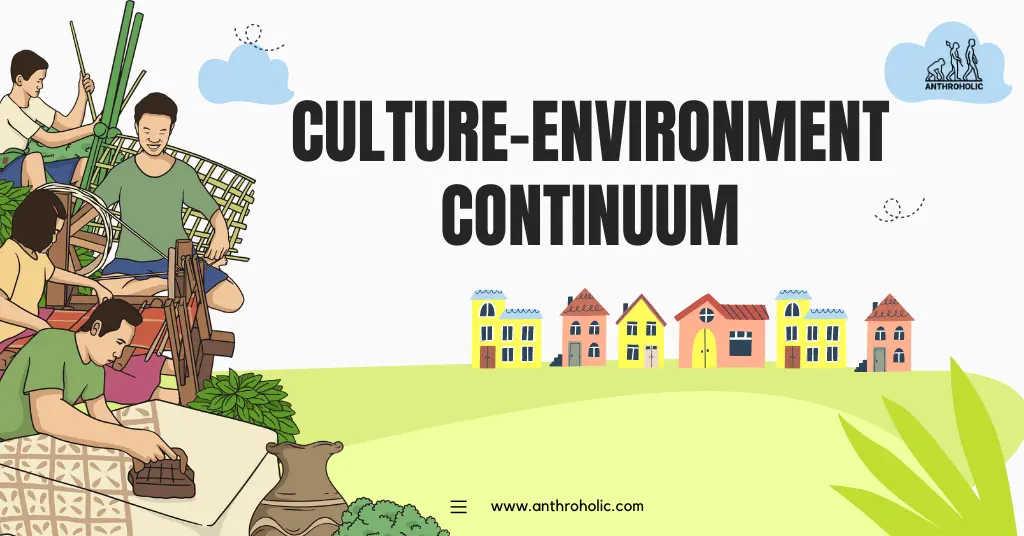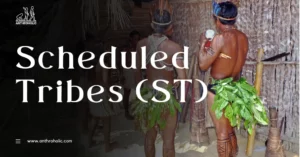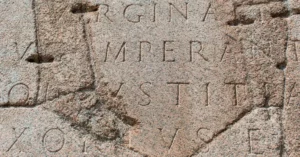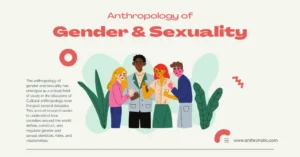AI Answer Evaluation Platform Live Now. Try Free Answer Evaluation Now
Culture-Environment Continuum
The Culture-Environment Continuum concept constitutes an influential and challenging theoretical paradigm that has greatly impacted the field of cultural anthropology [1]. It helps to clarify the relationship between cultures and their natural environments, asserting that both are inextricably connected and continuously impact each other [2]. This perspective can serve as an effective tool for comprehending intricate sociocultural systems and their contextual environments [3].

Historical Overview
Early Anthropological Views
Anthropology’s early practitioners held varying views concerning the relationship between culture and environment [4]. For instance, the environmental determinism theory suggested that the natural environment chiefly shapes culture. However, it failed to account for human agency and technological innovation.
| Early Views | Limitations |
|---|---|
| Environmental Determinism | Underestimation of human agency |
| Cultural Determinism | Overemphasis on cultural factors |
The Emergence of Culture-Environment Continuum
In contrast, the culture-environment continuum theory, which emerged in the late 20th century, takes a more nuanced approach, viewing culture and environment as interdependent. It argues that while environment influences culture, culture also shapes the environment, thus recognizing the interplay between human agency, cultural systems, and the physical world.
Key Concepts of Culture-Environment Continuum
Reciprocal Relationship
In the culture-environment continuum, culture and the environment are viewed as part of a reciprocal relationship. Cultures modify and shape their environments through technologies and land use practices, while environments, in turn, limit or provide opportunities for cultural practices.
Dynamic Continuum
The concept emphasizes a dynamic continuum where changes in the environment can lead to cultural adaptations and vice versa. It rejects the static view of culture and environment and embraces a model of constant change and adaptation.
Environmental Feedback
The notion of environmental feedback is central to the culture-environment continuum. This posits that the changes in the environment resulting from cultural practices can feed back into the cultural system, leading to further modifications.
Case Study: The Culture-Environment Continuum in Practice
The Kayapó of Brazil
An illustrative example of the culture-environment continuum concept is the case of the Kayapó people in the Brazilian Amazon. Their cultural practices of slash-and-burn agriculture, hunting, and gathering have significantly shaped the forest ecosystem around them. In turn, the forest provides resources that sustain their culture and influence their beliefs and practices.
Outcomes and Implications
Understanding the Kayapó’s culture-environment continuum offers insights into sustainable land management practices and highlights the importance of cultural preservation in environmental conservation strategies.
| Case Study: Kayapó | Key Insights |
|---|---|
| Culture and Practices | Slash-and-burn agriculture, hunting, and gathering |
| Environmental Influence | Shaping of forest ecosystems |
| Cultural Influence | Resources sustain culture, beliefs, and practices |
| Implications | Insights into sustainable land management and cultural preservation |
The Culture-Environment Continuum in Contemporary Contexts
Urbanization and Cultural Shifts
In modern times, the Culture-Environment Continuum framework can be applied to analyze the urbanization process. The construction of cities, transportation networks, and other infrastructures have a profound effect on the environment, and simultaneously, the urban environment shapes culture, lifestyle, and social interactions.
| Modern Context | Impact on Environment | Impact on Culture |
|---|---|---|
| Urbanization | Altering landscapes, pollution | Changes in lifestyle, social dynamics |
Climate Change and Cultural Adaptation
The impact of climate change on human societies is another critical area where the culture-environment continuum can offer insights. Different cultures are adapting to and mitigating climate change impacts in various ways, and their success or failure affects their surrounding environments.
Globalization and Cultural Homogenization
Globalization is an increasing force that brings cultural shifts in societies. The culture-environment continuum framework can elucidate how globalization might lead to cultural homogenization and how that, in turn, impacts the global environment through common practices and policies.
Challenges and Criticisms of the Culture-Environment Continuum
Overemphasis on Dichotomy
Some critics argue that the Culture-Environment Continuum may sometimes overemphasize the dichotomy between culture and environment, which can obscure the complex and nuanced interactions that exist within and among cultures and environments.
The Risk of Oversimplification
There is also a risk that the Culture-Environment Continuum model may oversimplify complex relationships, leading to generalized solutions that may not be applicable across different contexts.
Future Prospects: Integration and Interdisciplinarity
Integration with Other Theoretical Models
The Culture-Environment Continuum model may benefit from integration with other theoretical frameworks like systems theory, political ecology, and cultural materialism to offer a more comprehensive understanding of culture-environment interactions.
Promoting Interdisciplinary Collaboration
Embracing interdisciplinary collaboration by involving ecologists, sociologists, historians, and other experts can foster a more in-depth and nuanced analysis of the Culture-Environment Continuum.
Conclusion
The Culture-Environment Continuum is a pivotal concept in anthropology, reflecting the intricate relationships between human cultures and their surrounding environments. By understanding these connections, we can form strategies for conservation, development, and sustainability that respect and preserve cultural diversity.
References
[1] Kottak, C. P. (2017). Cultural Anthropology. McGraw Hill.
[2] Scoones, I. (1999). New ecology and the social sciences: what prospects for a fruitful engagement? Annual Review of Anthropology, 28(1), 479-507.
[3] Steward, J. H. (1955). Theory of Culture Change: The Methodology of Multilinear Evolution. University of Illinois Press.
[4] Diamond, J. (1997). Guns, Germs, and Steel: The Fates of Human Societies. Norton.




